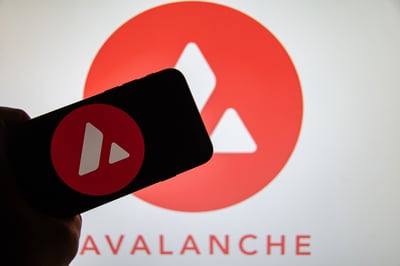Blockchain has a scalability problem and there are no easy solutions to it. Mainstream payment systems like Visa and PayPal leave networks like Bitcoin and Ethereum in the dust in terms of the speed at which they process transactions, and it means crypto must seriously up its game if it’s ever going to compete.
A quick comparison shows us how bad things are. Bitcoin processes a miserable 7 transactions per second while Ethereum only manages around 20 tps. Contrast that with PayPal, which can handle 193 tps and Visa, which does a remarkable 1,667 tps, and you can understand the problem.
These quandaries aren’t new. Scalability has long been the most pressing challenge in the crypto industry due to the limitations of the underlying blockchain architecture.
One of the main constraints of blockchain is the block size. The size of each block that’s processed by a blockchain has a significant impact on the network’s speed and capacity. In Bitcoin, for example, block sizes are limited to just one megabyte. Satoshi Nakamoto set this limit in order to prevent miners from creating blocks that would be too large for other participants in the network to accept. But this limit means the speed at which transactions are validated is capped, because each one must wait to be included in a block before it can be confirmed.
It’s theoretically possible to increase the block size to speed up transaction processing times, but doing so comes with tradeoffs. For one thing, it would mean that blockchain nodes have to increase their storage capacity, which can be expensive to procure. A second problem with increasing the block size is that if a node attempts to upload a large block size to its network peers, this would take longer, delaying the transfer and sending the system out of sync, leading to temporary chain splits.
Transaction speeds create another problem. Users must pay a fee to miners to ensure their transactions are verified and confirmed. Due to the expanding nature of blockchains, many users are willing to pay higher fees to prioritize their transactions, meaning that those who pay lower fees are pushed to the back of the queue.
Scaling Blockchain With Off-Chain Transactions
While Layer-2 networks can ease blockchain congestion to a significant degree, nobody has yet come up with a solution that can enable transactions to be completed instantaneously, in real-time.
The emergence of newer, Layer-3 infrastructure protocols might just help the industry to achieve this at last. A great example of this is Yellow Network, which is building a decentralized cross-chain and peer-to-peer overlay network to power rapid transactions across multiple networks. It’s an extremely promising solution that can facilitate access to various kinds of tokens and assets from multiple isolated networks.
Yellow Network makes it possible to pool the available liquidity from multiple chains and decentralized exchanges (brokers) from every blockchain ecosystem at once. To do this, it has built a complex architecture that’s powered by three different technologies.
The first of these is its Financial Information Exchange, or FIX, which is a communications system that relies on “state channels”, an off-chain scalability technique. With FIX, Yellow enables brokers, exchanges and trading firms to rapidly pass messages to one another, so they can optimize individual markets and make them more accessible.
Second is the Electronic Communication Network, or ECN, which optimizes the matching of buy and sell orders for traders.
Third are the state channels, which are used to make Yellow Network perform at rapid speeds. State channels are P2P protocols built using multi-sig smart contacts, and they have the ability to shift their state, opening and closing when the participants agree.
With state channels, transacting parties can interact with each other off-chain, and only need to record these interactions as a final state when the channel closes. So two traders can make multiple trades throughout the duration the channel is open, and only post the net balance from all of those trades, when the channel closes. With this technique, an unlimited number of transactions can be performed without overloading the underlying blockchain. Even so, they’re still as secure as the blockchain itself, as they’re ultimately settled on it when the channel is closed.
Consensus is achieved through the multi-sig contracts that perform the role of matching orders. They require the signature of both parties to make a state change and validate the transactions that have been performed. In this way, malicious actors cannot cheat other participants, as both parties must agree on the state.
State Channels In Action
To open a state channel, the counterparties are required to deposit collateral into the multi-sig contract. On Yellow, this collateral is paid using YELLOW tokens and managed by its ClearSync Protocol. These deposits are sent to a smart contract that manages the channel, and ensures that no double spending will occur, either on- or off-chain.
Once the channel is open and the deposits paid, the two counterparties can begin transacting with one another as much as they wish, using cryptographically signed messages. Their profit and loss statements will alter as each transaction is made.
Finally, when all the transactions have been completed, either of the two parties can close the channel to initiate an on-chain transaction. For this to occur, both must agree on the final state of the channel, before submitting the outcome to the blockchain to be recorded on the next block. When this happens, the final accounts are settled and the deposits returned to participants.
What About Disputes?
Should one of the participants reject the final state or fail to respond, the other can initiate an on-chain dispute. In this case, they’ll have to submit the latest state, including a list of the digitally-signed transactions recorded off-chain, to a smart contract. This is done in order to prove their claims are legitimate. The other party can disagree and submit their own claim over the final state of the channel. The adjudicator will then review the transactions to settle the dispute, using the locked collateral as insurance to the aggrieved party.
Yellow Network Participants
The Yellow Network is made up of several participants, including brokers, exchanges, market makers and custodians.
The first participants are retail brokers, who are defined as non-custodial businesses. The Exchanges are CEX and DEX platforms that want to access Yellow Network in order to access deeper liquidity and cater to cross-chain retail users with higher scalability and performance. Market makers can also participate in Yellow Network, collecting trading fees and providing deep liquidity to brokers. Finally there are also custodians, who can provide trusted custody services for users to secure their funds.
YELLOW Token
The YELLOW token is the native cryptocurrency of the Yellow Network and must be held to gain access to its ecosystem. They’re primarily used as collateral by those who want to participate in the network. Each broker must lock a minimum of 250,000 YELLOW tokens within a smart contract to begin trading. The token can also be staked to reduce trading fees, and earn rewards and revenue share on trading fees.
Bottom Line
Yellow Network promises to deliver incredible benefits to the crypto industry, enhancing the cross-chain interoperability that has become essential in today’s multichain world and accelerating transaction throughput to near real time.
By creating a Layer-3 infrastructure based on state channels, Yellow Network is able to operate independently of the underlying blockchain platforms and facilitate inter-connectivity and cross-chain transactions. Yellow’s novel architecture is reportedly capable of matching billions of messages per day, substantially faster than any paired L1 and L2 protocols are capable of doing. It can enable the high-frequency trading without restrictions that is required to bring crypto up to the level of traditional finance.
 Nikolas Sargeant
Nikolas Sargeant





